Sections
How to Use Google Analytics Data to Improve Your SEO Strategy
Reading Time: 4 minutesWhen it comes to SEO, it’s pretty typical for keywords to dominate the conversation. Everyone’s worried about what keywords they’re ranking for and how many.
Keywords are undoubtedly important for SEO, but they’re just one part of a holistic SEO strategy. What’s more important is that your SEO strategy is working as a whole – that your organic traffic is growing, and that traffic is converting and engaging with your site.
How do you know if your SEO strategy is working? By regularly tracking your organic visitors and analyzing their behavior.
Great news: there’s a tool that helps you do just that. The even better news is that it’s completely free. We’re talking about Google Analytics.
3 Key SEO Metrics to Watch in Google Analytics
Google Analytics is a free tool you can use to monitor your organic traffic, find opportunities for improvement, and fix problems. Regularly review these SEO insights to shape a more effective SEO strategy for your brand.
1. Track organic traffic conversions.
How much of your site traffic is from organic visitors, and how well are they converting? Find out by navigating to Acquisition > All Traffic > Channels in Google Analytics.
Here, you’ll see a list of all your channels, including Direct, Social, Paid and Organic Search.
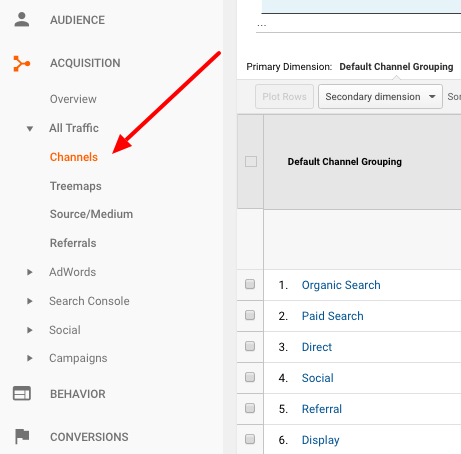
By reviewing your traffic sources as a whole, you can see how your organic traffic compares to other channels.
For example, for the company below, you can see that Organic Search only accounts for about 40% of their traffic, even though it represents over half of their conversions. Since organic visitors tend to convert at a higher rate than visitors coming from other channels, they’ll want to optimize their SEO to attract more of these high-converting customers.
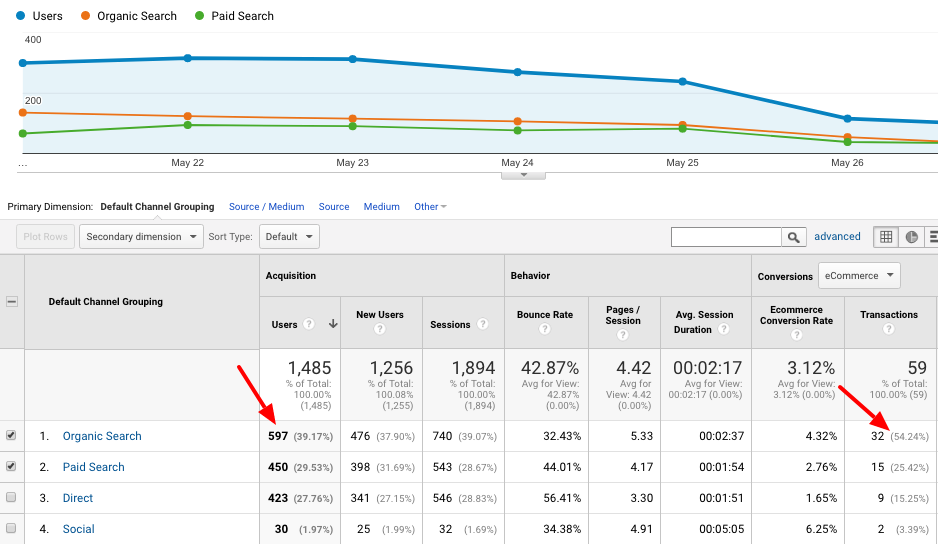
2. Find page speed improvements.
Starting this summer, Google is making site speed an official ranking factor for mobile searches. That means that how fast, or how slow, your site loads for web visitors will impact your ranking. The faster your site, the better your SEO.
The best practice recommendation is to keep page load under 3 seconds, but if you can make it even quicker, you should. With people increasingly using their mobile phones to access the internet these days, they don’t have time to wait around for your website to load.
In Google Analytics, navigate to Behavior > Site Speed > Page Timings. Make sure Avg. Page Load Time (sec) is selected. Then, click on the Secondary Dimension tab and start typing in the word “medium.” Select Medium from the list that appears.
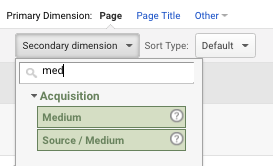
Next, you’ll want to click Advanced on the right, and set it to only show Organic traffic.

Click Apply, and voila – you have a list of the page load time for every single page on your site:
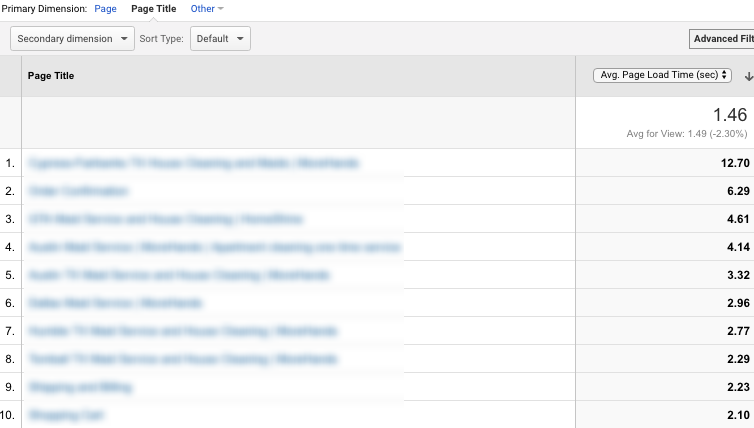
Even when you make sitewide speed improvements, there are often culprits that go unnoticed. Perhaps there’s a massive video file on your home page that needs to be compressed, or a slow-loading plugin slowing down another page. This Google Analytics report pinpoints specific pages that are turning away organic visitors – simply for being too slow.
3. Discover your most popular pages.
Have you ever wondered which pages are the most popular on your site? Your homepage is probably (hopefully) one of them, but wouldn’t it be useful to know which blog articles tend to drive conversions, or if certain product pages outperform others?
Let Google Analytics lead the way. Navigate to Behavior > Site Content > Landing Pages. From there, choose Medium as your Secondary Dimension, and click on Advanced to filter your view to only see your top organic landing pages.
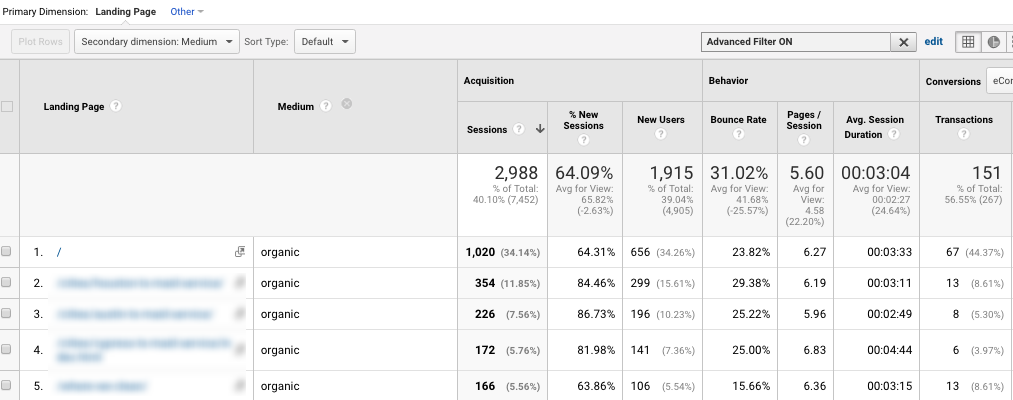
The default sort reveals which pages attract the most organic traffic, but pay attention to the other columns as well. Which drive the most conversions? Look to the Transactions column. Which drive the most engagement? Look for pages with a low Bounce Rate and high Avg. Session Duration.
With this information in hand, it’s time to go directly to the page. Visit your top-performing pages and review them with a keen eye. What about it is performing so well? Have you optimized for SEO with smart title tags and meta descriptions designed to drive clicks from Google? Is the content especially helpful? Perhaps one product page outperforms another because you’ve included a tutorial video.
By reviewing your most popular pages, you can learn what elements resonate best with your users. Then, you can apply those elements as you create new pages in the future.
Consider incorporating those elements onto your less popular pages, too, to see if it gives them a boost. To find those pages, just flip the sort in Google Analytics.
Turning SEO Insights Into Action
Now you have a snapshot of your SEO performance. For help turning that into actionable strategies for improvement, contact Your Marketing People. From site audits to keyword tracking and content creation, we specialize in helping you build your organic traffic. Learn more about our SEO services.







